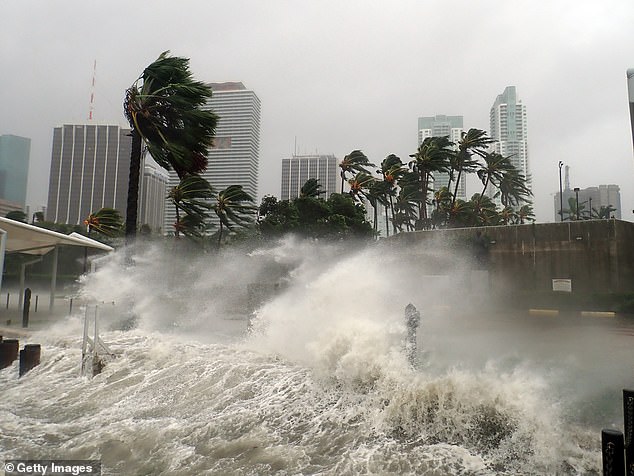
12 Million Face New Storm Threat as Experts Warn of ‘Worst Flash Flood Year Ever’
Hurricane Trackers Warn Gulf Coast Storm Threatens 12 Million Americans
[Image 1: Satellite map showing storm system near the Gulf Coast with caption: "Forecasters track a developing storm system threatening the Gulf Coast."]
The National Hurricane Center (NHC) has issued urgent alerts as a brewing storm system threatens nearly 12 million Americans from Florida to Texas. With a 10% chance of intensifying into a tropical cyclone, the storm is expected to bring heavy rainfall, flash flooding, and dangerous rip currents to coastal regions between Wednesday and Friday.
Heavy Rainfall and Flood Risks
The storm’s path stretches from the Carolinas across Florida into the Gulf of Mexico, impacting Alabama, Mississippi, Louisiana, and Texas. Parts of Florida’s Interstate 10 corridor could see over six inches of rain in mere hours, heightening flood risks. This comes weeks after catastrophic Texas floods killed 135 people, including children at a summer camp.
[Image 2: Flooded streets in Texas with caption: "Recent Texas floods caused widespread destruction, claiming over 100 lives."]
AccuWeather warns 2025 may become the “worst flash flood year in modern U.S. history,” with flash flood reports already 70% above the 10-year average. At least 184 flood-related deaths have occurred nationwide this year, including tragedies in Kansas, North Carolina, and New York. Last weekend alone, 200 flash floods were reported from the Midwest to the mid-Atlantic.
Climate Factors Amplifying Storms
Experts blame rising atmospheric moisture and warming temperatures for intensifying storms. “These floods aren’t random—they’re fueled by heat and trapped tropical moisture,” said AccuWeather Chief Meteorologist Jon Porter. A stronger-than-normal Bermuda High and Canadian storm systems are also driving extreme weather patterns.
[Image 3: Visual of overflowing river with caption: "Rising atmospheric moisture is increasing rainfall intensity globally."]
Economic and Community Impact
Major floods have caused an estimated $375–$421 billion in U.S. economic losses this year. In New York, a July storm dumped four inches of rain in hours, flooding subways and killing two in New Jersey. Drought-hardened soils in regions like Texas worsen runoff, turning rainfall into deadly flash floods. “When rain hits concrete-like soil, it floods everything in its path,” explained AccuWeather’s Dan DePodwin.
Urgent Preparedness Calls
Officials urge Gulf Coast residents to prepare for rapid weather changes. Potential risks include urban flooding, rough surf, and even tornadoes. “This storm could mirror last week’s system, re-flooding vulnerable areas,” AccuWeather cautioned. Boaters and coastal communities are advised to monitor forecasts closely.
[Image 4: Residents rescued from floodwaters with caption: "Emergency responders assist flood victims in New Jersey."]
Brett Anderson, AccuWeather’s senior meteorologist, noted, “Extreme rainfall is now hitting beyond typical trouble zones.” With hurricane season escalating, experts warn of rising insurance costs and long-term climate challenges.
Stay Informed
Residents in flood-prone areas should heed weather alerts, avoid flooded roads, and have evacuation plans ready. Follow local authorities for updates as the storm evolves.
[Image 5: Forecast graphic showing storm’s projected path with caption: "Projected storm trajectory from Florida to Texas by Friday."]
— For live updates, monitor the National Hurricane Center and local emergency services.
(Word count: ~600)


